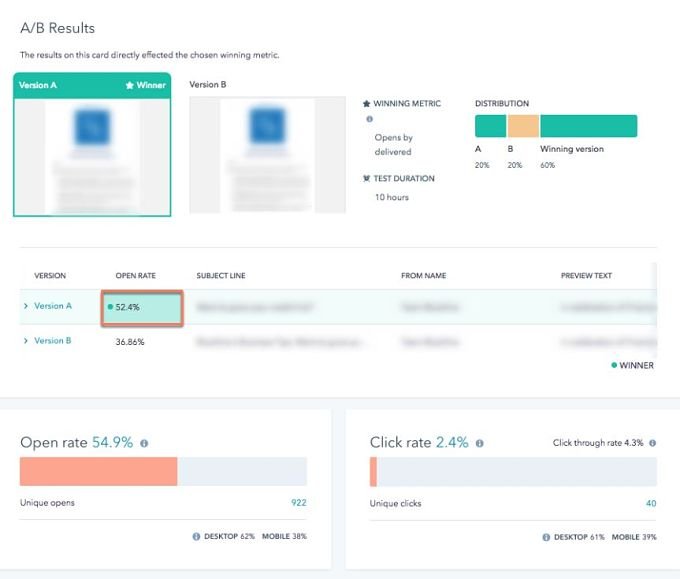HubSpot Marketing Features for Pharma Marketers
A deep dive into HubSpot's marketing and sales features.
Finances Online, amongst many other review sites, state that HubSpot is the no.1 marketing automation tool, based on a user satisfaction rating of 99%.
If you’re a pharma marketer adopting a digital/content/inbound strategy or is considering doing so, HubSpot is highly suitable as a platform for realising your marketing objectives - usually brand awareness and lead generation.
HubSpot also has its own sales features which bridge the gap between sales and marketing, that isn’t always easy to do. We will run through these specific HubSpot features in this post.
Subscribe for marketing insights via email
HubSpot coined the term inbound marketing, which is concerned with attracting visitors to a website to learn about specific topics, with the view of converting those visitors into customers and supporters.
The inbound marketing methodology, and therefore HubSpot platform, is centred around a four-stage process: Lead generation, lead qualification, lead nurturing and lead conversion, or as HubSpot will state; identify, connect, explore and advise.
(This isn’t to be confused with HubSpot’s three-stage buyer’s journey – awareness, consideration, decision - created predominantly for marketers as touchpoints to create content and used alongside this methodology.)
Key Hubspot marketing features
The features of the platform are, therefore, built to complete each of the four processes, moving the visitor along from a stranger to customer, from cold to warm.
We’ll run through some of the key HubSpot features that pharma marketers can find useful when conducting their own digital/inbound marketing campaigns, specifically at each stage.
Highlighted HubSpot features:
1. Learning Center
2. Design Tools
3. Planning and Strategy
4. Social
5. Page Optimisation
6. Personas
7. Conversations (Chatflows)
8. Lists
9. Workflows
10. A/B Testing
11. Smart Content
12. CRM (Contacts)
13. Meetings
14. Campaigns
BEFORE YOU START…
1. LEARNING CENTER
To fully understand all aspects of the HubSpot platform, as well as the inbound marketing methodology, HubSpot has developed the HubSpot Academy which offers training videos and supporting material. Which are particularity useful when starting out with HubSpot and inbound.
Here, certifications can be gained that demonstrate competency using HubSpot and its features as official recognition. The Learning Center is particularly good, not to mention comprehensive, considering that many of the enterprise CRM providers do not offer such training out-of-the-box for learning the platform and its individual components.
2. DESIGN TOOLS
Perhaps the only feature where pharma marketers will need to hire a web developer/designer. Before you begin with inbound campaigns, you will require a set of templates (in-line with your organisation’s brand guidelines and current website) which will form the basis of all of your communications.
The Design Tools feature is easy to use once it has been learned and the Learning Center does offer a course on the feature. However, coding is involved for the initial set-up, and this initial configuration of the templates cannot be completed via a drag and drop editor (that is available once the templates are set up). HubSpot can create and set-up these templates for you at a small cost.
3. PLANNING AND STRATEGY
The inbound marketing methodology entails creating content to attract visitors to the website and organisation. Pharma marketers may find it difficult to create and adopt a content marketing strategy that is consistent and aligned with target audiences. The HubSpot Content Strategy/SEO tool pulls this all together and provides focus when setting topics, creating pillar and writing blog posts, which also comes with some basic analytics capability for research.
4. SOCIAL
HubSpot’s Social feature’s ability to connect social media activity with content campaigns, such as its keyword monitoring aspect, is also useful in the context of inbound campaigns.
Not all pharma organisations utilise social media for its fullest potential, but with a social tool built-in to the CMS and CRM, such as this one, marketers can quickly see how monitoring keywords and conversations, tracking engagements and understanding its effectiveness during content campaigns, on top of scheduling and analytics reporting etc., can benefit overall inbound marketing campaigns.
5. PAGE OPTIMISATION
As with any CMS tool in 2019, HubSpot offers two-page editor options, allowing you to create blog posts or landing pages with ease. What it offers, in addition, is an on-page optimiser, enabling the optimisation of keywords, your page title, the meta description and URL, heading tags, CTAs, images and internal links in the form of a checklist.
When looking to generate visitors organically, this tool is useful. (HubSpot’s page editor has a number of other great features which also make publishing pages easy.)
6. PERSONAS
HubSpot brings together a number of tools into one platform, and by being fully integrated, it captures data and allows for the dynamic use of that data. This helps pharma marketers understand their target audiences, as well as understand the contacts currently gathered, which may not even be a target customer.
The Personas feature allows you to reach the people that you are trying to reach and connect those personas to campaigns. Create your own buyer personas with this free buyer persona template.
7. CONVERSATIONS (CHATFLOWS)
Much has been said about live chat in the last few years. As advocates of conversational marketing, we have previously looked at conversational interfaces, which includes live chat and chatbots – and you can access the conversational marketing interfaces blog post for more.
HubSpot’s Chatflows feature makes it easy to set up live chat on your website, as well as program a chatbot, where both can serve website visitors in a number of ways, mainly for lead qualification. Say hello to us (providing we are in the office) on our own live chat feature below.
8. LISTS
Once contacts are gathered in the CRM, for effective future marketing communication, the Lists feature can be adopted. Lists allows for quick and easy sorting of contacts and other views – also known as, but not referred to as by HubSpot, as segmentation. This means that pharma marketers can send specific emails to specific recipients and measure the performance of each specific list or segment.
It is also worth noting that the lists can be dynamic, meaning that at any time a contact meets specific criteria, it will be added to the new list for management tasks or for specific workflows.
9. WORKFLOWS
HubSpot makes creating workflows (lead nurturing email campaigns) easy to map and configure. Once configured, HubSpot will send out pre-set emails to contacts once a specific criteria is met. This sort of email marketing can, of course, be done manually, but this is hardly an efficient use of a pharma marketer’s time.
Marketing automation also eliminates the issue of sending out incorrect emails to potentially unengaged contacts and is crucial for scaling the lead nurturing process, especially for large pharma organisations and pharma marketers will also be heavily involved in the show calendars and working with other media.
10. A/B TESTING
I think this is one of the strongest features on the platform. Often, pharma marketers (and marketers everywhere for that matter) struggle with A/B testing, sometimes because of confusion of what A/B entails or even confusion with the technology or what needs to be done to run a test.
Pharma marketers can test their own emails within the Email tool in HubSpot, with the ability to test various elements of an email campaign at a time to see what leads to more opens and clicks, so that email campaigns are more successful.
11. SMART CONTENT (AND OTHER SMART FEATURES)
Personalisation has the ability to connect website visitors and leads with content specific to their needs and requirements, helping them transition into a customer.
HubSpot offers a basic form of personalisation, such as smart CTAs, smart forms and other smart content opportunities (such as personalised landing pages) that does enough to resonate with website visitors, without being creepy. Science professionals are aware of the data implications that arise with personalisation, so less is possibly more in this respect.
12. CRM (CONTACTS)
HubSpot’s CRM feature is possibly the simplest CRM system I have come across. It won’t have the advanced features of Salesforce or Microsoft Dynamics for example, but what it does offer is an easy-to-use (you will use all of its features, and not leave half of its features unused as it would with the enterprise-level CRM systems) CRM that stores client details and interactions.
The CRM registers all of that client’s interactions with your digital channels, providing you have some data on that contact. It also manages sales deals, and the tool offers a range of custom filters.
13. MEETINGS
The HubSpot Meetings feature is as straight-forward as they come – pharma marketers and salespeople can make a link available, that syncs with their diaries (Google Mail and Outlook), that allows prospects to book meetings on their own accord. Reducing the back-and-forth emails which is generally common when looking to schedule a meeting or call in advance. Particularly useful during the busy show calendar within the science/pharma sectors.
14. CAMPAIGNS (CURRENTLY IN BETA VERSION)
The Campaigns feature offers a holistic view of all of the above, giving pharma marketers the ability to set objectives across platforms and monitor progress on an ongoing basis. Keeping everything organised in separate campaigns helps with the overall management of each campaign, down to a single blog post.
This sort of campaign overview also creates new opportunities, such as potential gaps in the strategy should there be any, with the analytics for each campaign readily available and easy to interpret.
HubSpot: An all-in-one platform
This post is an overview of some of the key features that set HubSpot apart from other marketing automation platforms. In most cases, by themselves, each feature won’t offer a service as comprehensive as that of the market leader who have their own individual systems.
For example, HubSpot’s Social features does not quite live up to that of Buffer. But the key benefit for pharma marketers is that the social features will be integrated out of the box with the CRM, and the website, and the workflows, and all of the other features that make up HubSpot. This single view of all marketing communications, as well as that of the customer, makes it the marketing platform of choice.
This is the same for the Analytics tool: It will never come close to Google Analytics, but in most cases, it probably won’t need to and the dashboards HubSpot offers is adequate enough. And if you want to integrate HubSpot with Google Analytics, MailChimp or Salesforce, or any others from the list of HubSpot integrations, which is likely if you within for a science organisation, you can do so with ease.
For more on inbound marketing for pharma marketers, click here.
For more on what HubSpot can do for your science organisation, click here.

















